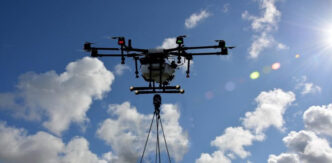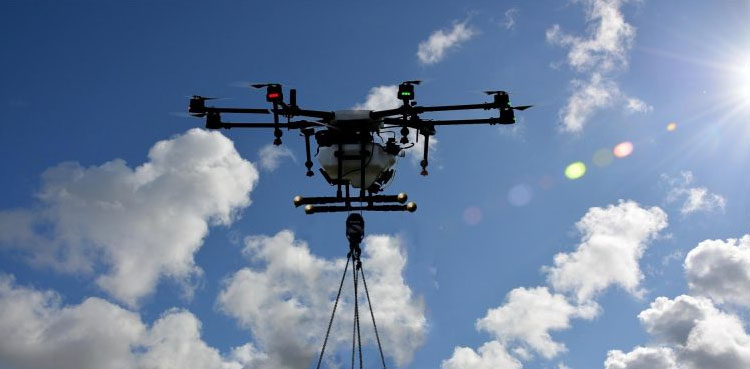Punjab Government Launches Pakistan’s First Airlift Drone for Flood Rescue Operations
LAHORE, PUNJAB – In a groundbreaking move to enhance disaster response capabilities, the Punjab government has introduced Pakistan’s first emergency airlift drone service, designed to evacuate individuals trapped in floods and other natural disasters. The advanced drone, capable of lifting up to 200 kilograms, marks a significant technological leap in rescue operations, particularly in inaccessible or hazardous areas .
🚁 Key Features and Capabilities
High-Capacity Rescue:
The drone can safely airlift a person weighing up to 200 kg (approximately 440 pounds) and transport them to secure locations. This capacity ensures the evacuation of most adults, including those with additional gear or minor belongings .
Immediate Deployment:
The Punjab Home Department has directed the drone’s immediate deployment to Multan, where severe flooding has stranded numerous residents. Test flights were successfully conducted in Lahore by Civil Defence teams before dispatch to South Punjab .
Expansion Plans:
The government has approved the procurement of 10 additional drones to bolster rescue efforts across the province. This expansion aims to create a fleet capable of simultaneous operations in multiple disaster-hit regions .
🌊 Operational Context and Urgency
Unprecedented Flooding:
Punjab is facing its worst floods on record, with over 900,000 people evacuated and 600,000 livestock relocated as of September 2025. Districts like Multan, Jhang, and Rajanpur are severely affected, with villages submerged and roads impassable .
Inaccessible Areas:
Traditional rescue methods (boats, helicopters) face challenges in reaching densely flooded or structurally compromised zones. The drone’s ability to operate in such environments ensures timely aid delivery and evacuations .
Complementary Relief Efforts:
Beyond evacuations, drones are being used to deliver essential supplies (food, water, medicine) to stranded communities. This dual approach addresses both immediate rescue and sustained humanitarian support .
🛠️ Integration with Broader Initiatives
Civil Defence Resilience Corps:
The Punjab Home Secretary announced the creation of the Punjab Civil Defence Resilience Corps, a modernized force trained to handle emergencies. Over 4,000 volunteers registered within a week via the online portal VCD.HOME.GOP.PK, enhancing grassroots engagement .
Technology-Driven Disaster Management:
This initiative aligns with global trends where drones are deployed for mapping, supply delivery, and surveillance during disasters. Countries like Indonesia, the U.S., and Japan have similarly integrated drones into emergency response .
Reducing Rescuer Risk:
By automating high-risk evacuations, the technology minimizes dangers to rescue personnel. The Home Secretary praised Civil Defence teams as “frontline soldiers,” emphasizing their enhanced safety and efficiency with drone support .
📊 Impact and Future Prospects
Revolutionizing Rescue Operations:
The drone’s deployment in Multan will serve as a critical test case. Success could prompt nationwide adoption, setting a precedent for other provinces .
Climate Resilience:
With climate change intensifying monsoon patterns, such innovations are essential for Pakistan’s long-term disaster preparedness. The technology offers a scalable model for future floods, cyclones, or earthquakes .
International Recognition:
This initiative positions Pakistan alongside global leaders in humanitarian drone use, potentially attracting partnerships or funding from international organizations like the UN .
💎 Conclusion
The launch of Punjab’s airlift drone service represents a transformative step in disaster management, blending cutting-edge technology with community mobilization. As floods continue to devastate the region, this innovation promises to save lives, reduce risks to rescuers, and deliver aid efficiently. The government’s commitment to expanding this fleet and engaging volunteers underscores a proactive approach to building climate resilience. Future efforts should focus on integrating drones with predictive analytics and real-time monitoring to create a comprehensive emergency response ecosystem







